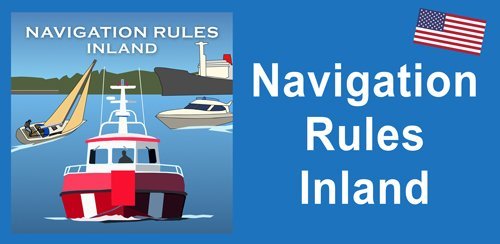If you can set an anchor correctly with confidence and know your boat will be safe in a secure anchorage, then you can rest in comfort and will not need to rely on moorings and marinas when cruising.
Anchoring is one of the most important boat handling skills. If you do not know how to anchor correctly then you risk endangering your boat and also others who might be anchored nearby. And if your anchor is unsuitable for the type of seabed beneath your keel then there is a high chance of the anchor dragging. For some boat owners, the fear of the anchor dragging means they stay awake all night, as a result getting little or no sleep and most likely stressing out their crew into the bargain.
Getting anchoring right is not always straightforward. It can be confusing with the many types of anchor available and there will always be conflicting opinions on which anchors would be best suited for your boat and your chosen cruising ground. Anchors and chain weigh considerable amounts, so loading up with excessive amounts of chain and anchors can affect a vessel’s performance and only really be necessary if planning a long distance voyage along a variety of potentially exposed stretches of coastline.
Types of anchor
Choosing the type and size of anchors and cable to carry aboard will depend on the type and size of your vessel and the sea area it is being used in. Most importantly, choose anchors that are big enough for your vessel and those which are recommended by the manufacturers. Cruising yachts normally carry at least two types of anchor, plus suitable lengths of chain and rope cables. Types of anchor include:
- Bruce – good power to weight, easy to handle, holds well in mud, sand and rock
- CQR or plough – good power to weight, stows well on bow roller, though awkward on deck. Holds well in mud and sand. Very popular and reliable
- Delta – good power to weight, also plough shaped. Stows well on bow roller
- Danforth – stows flat, good kedge anchor, hard to break out of mud. Excellent back up anchor. Prone to pull out if the wind or current reverses
- Fisherman’s – the traditional anchor. Good for rocky and heavily weeded seabeds, but heavy and awkward and not so good in sand and mud.
Chain and warp
Anchor cables can be either chain or rope, or both. For an anchor to work effectively, the vessel’s pull on its cable must be parallel with the sea bed, otherwise the anchor will break out from the sea bed and drag. The weight of chain prevents this from happening, providing there is sufficient length of chain lying on the sea bed.
A further factor that helps is the effect of the catenary curve of the cable between the boat and the anchor. This acts as a shock absorber between the boat and the anchor, so if the boat is hit by a sudden gust of wind the cable will straighten and tighten before it pulls hard on the anchor.
Hauling in an anchor and chain can be very heavy work if your vessel lacks an anchor winch, but chain is much stronger and will not chafe on the sea bed, unlike rope. A workable solution is to have the anchor cable consist of part chain, which lies on the sea bed and part rope, to make it more manageable. An all rope cable is much lighter and easier to manage, but less secure and prone to chafe. All rope cables are normally used with kedge anchors.
How much cable should you use? The amount, or scope, depends on the type of cable, the depth of water beneath the keel, plus the weather conditions and the height of tide. If anchoring in calm conditions with little or no tide, then the absolute minimum scope for chain is considered to be 3:1 and 5:1 for rope. In light to moderate conditions a ratio of 5:1 for chain and 8:1 for rope is generally accepted and in worsening conditions a ratio of 8:1 for chain and 10:1 for rope. In tidal areas, the rise and fall of the tide needs to be allowed for and if necessary adjustments will need to be made if at anchor for several hours or over night.
Trip line
Most anchors have a small hole for attaching a trip line, for use if there is risk of the anchor becoming fouled. The line is either brought back onboard and cleated or connected to a small buoy which floats above the anchor.
Choosing an anchorage
There are a number of factors to consider when choosing a place to anchor. Begin by studying the chart and look for recommended anchorages near your destination, which are marked on the chart with anchor symbols. Look for a location that will be sheltered from wind and waves in as many wind directions as possible and away from strong tidal streams. Also check the chart to see whether the ground will be suitable for anchoring and make sure you check the charted depths.
You will also need to bear in mind the wind direction and forecast for your planned stay and the state of the tide and tidal streams. Anchoring on a lee shore should definitely be avoided, even if the chart has an anchor symbol on it.
Anchoring Tips
Choosing an anchorage:
- Study Charts and almanacs to find a suitable anchorage.
- Consider the seabed, (also on charts). Sand or firm mud are ideal.
- Check the charted depth.
- Consider the conditions forecast for your planned stay, especially wind direction and strength – will the anchorage be sheltered?
- Consider the state of the tides – check the rise and fall and calculate the best depth to anchor in. Doublecheck there will be sufficient depth at low water, and sufficient chain for high water.
- Check the anchorage is well away from strong tidal streams.
Preparing the anchor:
- Is there sufficient cable on board for the depth? In light to moderate conditions use a ratio of 5:1 length of chain to depth, or 8:1 length of rope to depth.
- Approach the anchorage, check other boats. Are they anchored or moored? Where are their anchors? Are they a similar size to yours?
- Choose the spot to lay anchor, check depth is good, approach the spot slowly into the wind or tide (check how other boats are lying).
- If you have crew ask someone to operate the anchor at the bow.
Laying anchor:
- Stop the boat, lower the anchor under control to the seabed.
- Reverse slowly away, laying out cable in a controlled manner.
- When sufficient cable is let out, select neutral and check that the chain is tight and anchor is set and holding .
- If unsure, use a little reverse thrust to check it is holding.
- Take visual bearings of objects ashore to check the anchor is not dragging, remember the boat will swing on the anchor.
- Set deep and shallow alarms on the depth sounder. Then relax…
Weighing anchor:
- To raise anchor, motor slowly towards it until the chain is vertically above it. Ask a crew to indicate when, with hand signals.
- Now bring in the chain, keeping it as near vertical as possible.
- If the anchor does not break out, cleat the chain tight and motor gently astern until the anchor breaks out.
All of this advice and more is available in our easy-to-use, quick to access app for iPhone and Android. Go to SafeSkipper.com for more.










